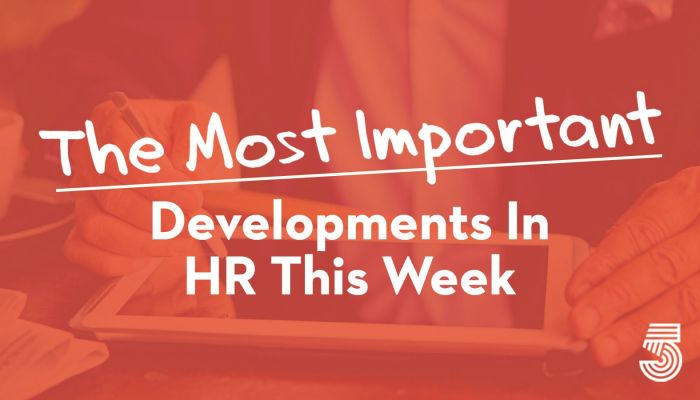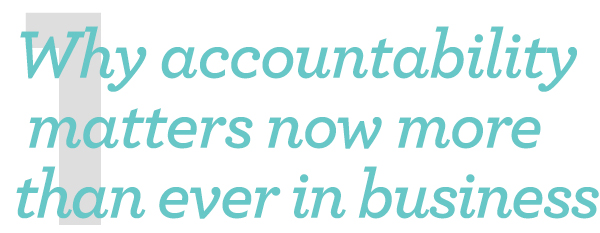
In Fortune’s April/May 2021 issue, we focus on the theme of “Trust and Consequences.” The issue’s unifying idea, writes Editor-in-Chief Clifton Leaf, is that “as far as society is concerned … how a company behaves in the world is now as important as what it sells or produces.” You can find the stories that make up this special project — including features on CEO turnover and culture shock at McDonald’s, Dominion Voting’s lawsuit against Fox News, the botched COVID-19 vaccine rollout in Pennsylvania, and many more. Fortune

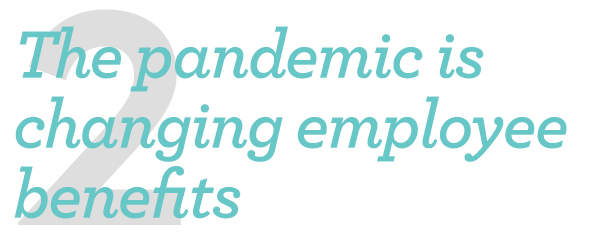
Care.com developed “The Future of Benefits” report, in which we asked 500 human resource leaders and C-suite decision-makers from across the U.S. what employee benefits they plan to keep, get rid of, add, and expand as a result of lessons learned during this crisis. Those we spoke to confirmed the toll the pandemic has had on their employees and their business: decreased productivity and retention, increased absenteeism, and declining mental health. That’s why almost all (98%) of the leaders we surveyed plan to newly offer or expand at least one employee benefit, prioritizing the ones workers deem most essential, like child and senior care benefits, flexibility around when and where work gets done, and expanded mental health support. In exchange for these essential benefits, 89% also said that they are deprioritizing at least one type of employee benefit because of COVID-19 — most frequently on-site child care, paid vacation days, commuter benefits, tuition reimbursement, and food or meals. HBR

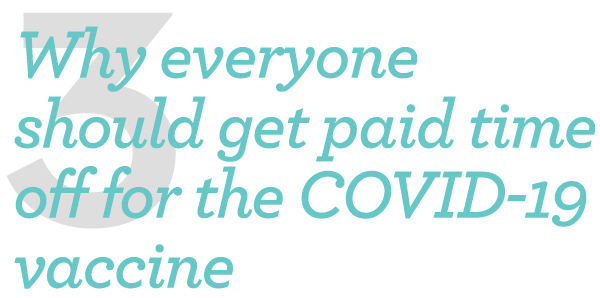
Last Wednesday morning, Kate, a financial tech engineer based in Michigan, used her last four hours of paid time off to go get a COVID-19 vaccine. It took more than two hours: an hour of driving, an hour of waiting, and 15 minutes of mandatory observation time afterward. “I was in a rush to get out of there,” she said, because her job requires her to clock in. Kate said her employer gives her 14 days of paid time off per year, including sick days, and it denied requests that she and her co-workers be given an additional two days of time off specifically to get the COVID-19 vaccine. The day after her shot, Kate experienced side effects. “I was so out of it. I was achy all over, I was exhausted. I could barely work,” she said. Because Kate was given the Pfizer vaccine, she still needs a second dose and is uncertain how she’ll schedule it around her workday. “I don’t know what I’m going to do. I guess take an unpaid day of vacation for that?” Her experience underscores the fact that although the COVID-19 vaccine itself is currently free in the United States, there are other financial, psychological, and emotional costs to getting the shot that some employers are making worse. HuffPost

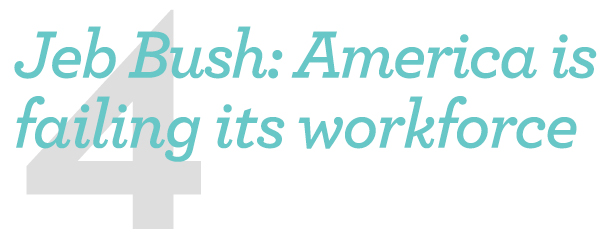
America doesn’t have a jobs problem. It has a pathways-to-jobs problem. Our economy is producing jobs — there were 7.4 million open jobs as of February in the midst of a pandemic — but our education system isn’t preparing people to fill those jobs. What’s worse, our workforce policies do a poor job of retraining people for the workforce of tomorrow. According to a study by PwC, roughly three out of four working Americans are ready to learn new skills to stay employable, but government-sponsored job training programs have a mixed-to-poor track record. Most Americans get the best education they can afford when they’re young and then start working. But they don’t stop there. They might take on a part-time gig, go back to school, take a few stretch assignments or follow the advice of a mentor. But is that DIY model going to work as a growing number of Americans face the risk that their job path might be closed off by automation, artificial intelligence, and other technologies? I don’t think so. The problem is that our workforce and career preparation programs, in our school systems, colleges, and various technical training centers, fail most Americans who want to better themselves. CNN

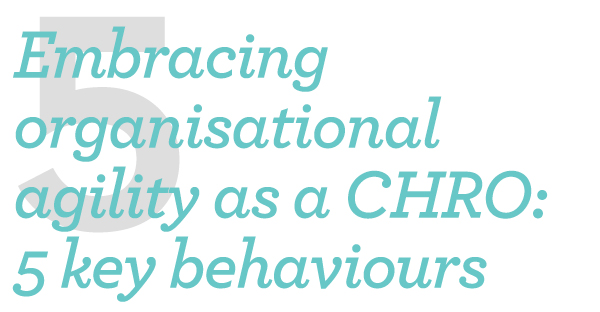
In the face of change, the most resilient companies are those that remain agile. In fact, a recent Workday study on organisational agility highlighted that the top-performing companies were 10 times more likely to react quickly to market shifts, verifying that agility is more often than not synonymous with performance. And it starts with the CHRO. Implementing agility successfully requires the C-suite to lead the charge. The CHRO, in particular, has an essential role in establishing an agile culture across the business. After all, an organisation cannot be agile if its people are not on board. The challenge is that, while a lot of CHROs recognise the importance of agility, creating a culture of agility is easier said than done. In fact, according to the study, a third of CHROs still don’t think their company’s strategy enables them to respond to market change. And, for a lot of organisations, the pandemic has put a strain on their culture and operations as people cannot communicate in-person and access systems, data, and information as easily remotely. Last year’s challenges, from furloughs to remote working, taught CHROs the importance of being able to rapidly adapt to change. This year, CHROs leaders have the opportunity to consolidate their learnings from the pandemic by fully embracing agile ways of working for the long-term. Personnel Today







